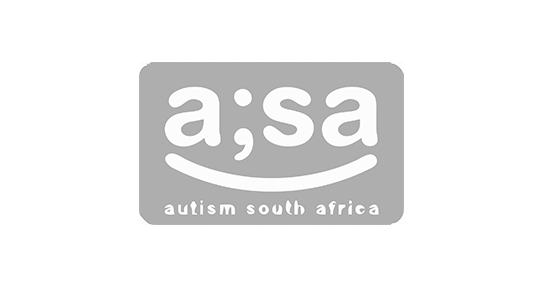
Autism
Autism is a complex developmental disability that typically appears during the first three years of life.
Autism, as defined by the Autism Society Of America (ASA) is: “Autism is a complex developmental disability that typically appears during the first three years of life and is the result of a neurological disorder that affects the normal functioning of the brain, impacting development in the areas of social interaction and communication skills. Both children and adults with autism typically show difficulties in verbal and non-verbal communication, social interactions, and leisure or play activities.
Autism is one of five disorders that fall under the umbrella of Pervasive Developmental Disorders (PDD), a category of neurological disorders characterized by “severe and pervasive impairment in several areas of development.”
Autism affects the normal functioning of the brain, impacting development in the areas of social interaction and communication skills.
Extensive experience in the development and implementation of autism intervention programs.
Autism Interventions
I have extensive experience working in the field of autism intervention, not only as a tutor, but also as a psychologist in the development and implementation of intervention programs. I offer the following services in my practice:
- Assessment of child and family needs.
- Development of child specific intervention programs incorporating the following intervention programs: Relationship Development Intervention (RDI); Social Stories; and Pivotal Response Training (PRT).
- Training and supervision of tutors
- Support for parents and caregivers
- One on one therapy sessions
What are Social Stories?
Carol Gray, first defined Social Stories in 1991. Social stories are used to teach children with developmental delays, including autism spectrum disorder, more appropriate social skills. Children on the spectrum don’t just pick up social skills, and social stories are a wonderful way to teach social skills in a direct way. Social stories help to give children a better understanding of other people’s thoughts, feelings and views. They also help the child to better predict another person’s behaviour based on their actions.
Social stories present various situations in a structured and direct way so that the child can understand a situation without having to read between the lines. A Social Story describes a situation, skill, or concept in terms of relevant social cues, perspectives, and common responses in a specifically defined style and format. The goal of a Social Story is to share accurate social information in a patient and reassuring manner that is easily understood by its audience.
Social stories are written from the child’s perspective. They are simply illustrated using uncluttered drawings or photographs to depict each step of the story. Half of all Social Stories developed should affirm something that an individual does well. Although the goal of a Story should never be to change the individual’s behaviour, that individual’s improved understanding of events and expectations may lead to more effective responses.
Social stories are used to teach children with developmental delays, including autism spectrum disorder, more appropriate social skills.
How a Social Story is Constructed
A social story is constructed using the following types of sentences:
Descriptive sentences
are truthful and observable sentences (opinion- and assumption-free) that identify the most relevant factors in a social situation. They often answer “wh” questions.
Perspective sentences
refer to or describe the internal state of other people (their knowledge/thoughts, feelings, beliefs, opinions, motivation or physical condition) so that the individual can learn how others’ perceive various events.
Directive sentences
presents or suggests, in positive terms, a response or choice of responses to a situation or concept.
Affirmative sentences
enhances the meaning of statements and may express a commonly shared value or opinion. They can also stress the important points, refer to a law or rule to reassure the learner.
Control sentences
identifies personal strategies the individual will use to recall and apply information. The individual writes them after reviewing the social story.
Cooperative sentences
describe what others will do to assist the individual. This helps to ensure consistent responses by a variety of people.
Partial sentences
encourages the individual to make guesses regarding the next step in a situation, the response of another individual, or his/her own response. Any of the above sentences can be written as a partial sentence with a portion of the sentence being a blank space to complete.
What is Relationship Development Intervention (RDI)?
Relationship Development Intervention (RDI) is a research-based treatment program developed by Dr. Steven E. Gutstein. RDI activities are designed for the entire range of Asperger Syndrome, PDD, Autism and NLD and have exercises that can be useful for children from age two onward. According to Gutstein, lasting and true relationships are formed by not only focusing on Instrumental skills, but also on teaching and experiencing Relationship skills.
The fun activities in RDI focus on the skills needed to find and maintain friendships, and to form true and authentic emotional connections with other people. The skills progressively build upon each other over a period of a few years. The skills areas identified by Gutstein are: enjoyment; referencing; reciprocity; repair; co-creation; we-go; social memories; maintenance; alliance and acceptance.
The program curriculum is composed of six levels: Novice, Apprentice, Challenger, Voyager, Explorer & Partner.
Lasting and true relationships are formed by not only focusing on Instrumental skills, but also on teaching and experiencing Relationship skills.
Pivotal Response Treatment is an example of an intervention method that aims to empower the parents and close family of children with autism.
What is Pivotal Response Training (PRT)?
Pivotal Response Treatment, developed by Lynn and Robert Koegel, is an example of an intervention method that aims to empower the parents and close family of children with autism. Parents are encouraged to embrace the principles of PRT as a way of life, and as a specific system of targeting those pivotal skills that may lead to enhanced abilities and functioning in their child.
Parents are therefore involved in, and responsible for the development and maintenance of the daily programs. Tutors provide the one-on-one teaching in the home as well as support in the school environment. Formal intervention, so-called therapy time, varies from 1 to 8 hours a day. Effective program implementation and generalization of acquired skills are only possible with the total commitment and cooperation of the parents and close family of a child with autism. Consequently, any professionals involved in the treatment of the child (psychologist, speech therapist, occupational therapist), are seen as part of a team, and encouraged to work collaboratively to achieve a common goal.
The objective of PRT is to enhance and encourage pivotal behaviours in children with autism. Pivotal behaviours are certain essential behaviours and responses that are central to a wide area of functioning. Targeting these behaviours triggers a ripple effect in those areas not specifically targeted, with the result being enhanced functioning in most of the developmental areas. The pivotal behaviours identified by the Koegel Autism Center are motivation, self-regulation, empathy, self-initiations and responsivity to multiple cues. The PRT program put emphasis on self-initiations and motivation.
ACTIVE PARTICIPATION
The aim of PRT is teaching and learning within the natural environment of the child, mostly at home and in the school, with the emphasis on events and behaviour that are inherently motivating. The parents and immediate family of children with autism are encouraged to take part in the devising and implementation of treatment, and their enthusiasm and knowledge perceived as the key to the successful implementation of the PRT program.
SOCIAL SKILLS
Because of their unique and different understanding of the social world and its complexities, children with autism sometimes struggle to make and keep friends. Intervention techniques (in addition to PRT) are taught in order to facilitate the development; continuance; and most importantly; generalisation of those skills.
STRESS & ANXIETY
Children with autism may appear to be anxious and stressed at times, especially when faced with new and unfamiliar tasks. Certain intervention methods could help to reduce this anxiety and foster greater self-awareness within the child. These methods are especially effective when put into practice by parents or caregivers, either in combination with the PRT program or on its own.
Children with autism may appear to be anxious and stressed at times, especially when faced with new and unfamiliar tasks.
Interventions are based on a child’s interests and uses natural learning.
Why Choose Pivotal Response Treatment?
PRT may be described as a combination of the best of applied behavior analysis and today’s proven best practices:
Child-directed. Interventions are based on a child’s interests and uses natural learning. A child, who grasps the connection between using verbal communication and getting what they want, will spontaneously start using words and sentences to communicate their needs.
Fun. Repetitive tasks and drills may cause anger and frustration in children with autism, and the aim of PRT is to teach skills by way of pleasant and enjoyable activities. As a result, children look forward to therapy and actually enjoy learning.
Faster. PRT is a way of communicating and interacting that makes it easier and more natural for parents to include in their daily way of life. Skills taught by the tutor are maintained and generalized in everyday situations and families will start seeing positive results in a short amount of time
A stress reliever. Parents who implement PRT principles are empowered to take charge of their destiny and will enjoy interacting and communicating with their child.
Effective in all settings. PRT is flexible enough to use at home, in the classroom, and in the community.
(Adapted from Pivotal Response Treatments for Autism, R.L. Koegel & L.K. Koegel, 2006).






